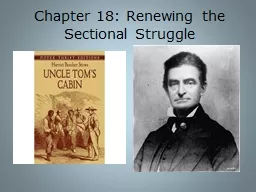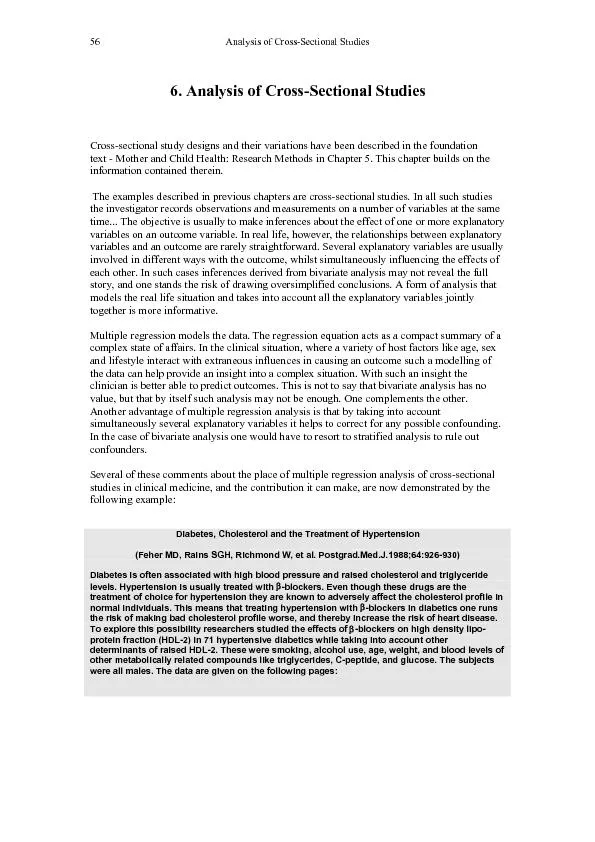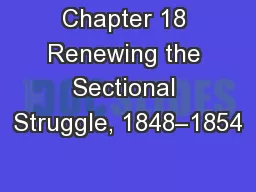PPT-Chapter 18: Renewing the Sectional Struggle
Author : sherrill-nordquist | Published Date : 2017-10-31
The Popular Sovereignty Panacea Popular sovereignty meant that the sovereign people of a territory should determine the status of slavery It was popular with
Presentation Embed Code
Download Presentation
Download Presentation The PPT/PDF document "Chapter 18: Renewing the Sectional Strug..." is the property of its rightful owner. Permission is granted to download and print the materials on this website for personal, non-commercial use only, and to display it on your personal computer provided you do not modify the materials and that you retain all copyright notices contained in the materials. By downloading content from our website, you accept the terms of this agreement.
Chapter 18: Renewing the Sectional Struggle: Transcript
Download Rules Of Document
"Chapter 18: Renewing the Sectional Struggle"The content belongs to its owner. You may download and print it for personal use, without modification, and keep all copyright notices. By downloading, you agree to these terms.
Related Documents














